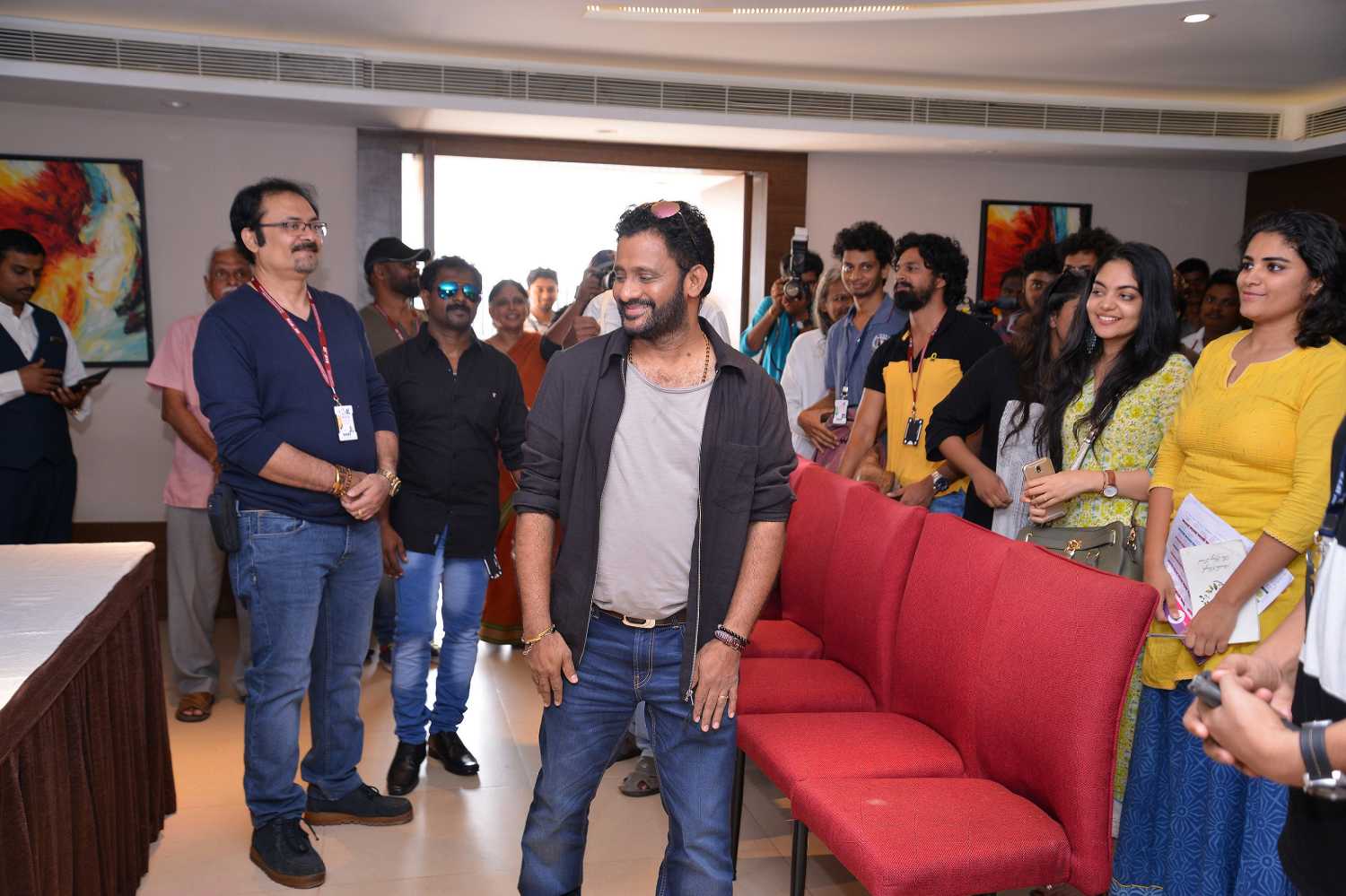The Oscar-winning sound designer and famed recordist Bishwadeep Chatterjee discuss the 'challenges of sync sound recording'.
IFFK 2017: Sound in cinema is like the good wife in a bad marriage, says Resul Pookutty
Trivandrum - 10 Dec 2017 21:01 IST
Updated : 12 Dec 2017 21:06 IST


Anita Paikat
On its second day, 9 December, the 22nd International Film Festival of Kerala (IFFK) hosted a masterclass on the ‘challenges of sync sound recording.’ Oscar-winning sound designer Resul Pookutty was the keynote speaker, and he was joined by Bishwadeep Chatterjee, who was the sound designer on films like Devdas (2002), Lage Raho Munna Bhai (2006), 3 Idiots (2009) and Madras Cafe (2013).
The introduction of sound in cinema changed the fate of thousands of people working in the industry. Those who refused to accept sound in their films perished, stars with poor voices were suddenly out of jobs, and film production became costlier.
Yet, sound designers and technicians haven’t received the credit they deserved. As Pookutty put it, “Sound is like the good wife in a bad marriage.”
Addressing the ill-treatment meted out to the sound department in general, Pookutty listed the contributions of sound to cinema. The biggest, he said, was the standardization of film speed at 24 frames per second. Before sound was introduced in films, theatres would speed up a film while projecting it to reduce the runtime and fit in more screenings. But once sound came into the picture, so to speak, they could no longer cheat the audience.
Cinema, according to Pookutty, is the extension of space and time, and the sensation of time is provided by sound. Imagine, he says, that you are looking at a painting while you hear the sound of a cricket in the background. The observer will assume the setting is in the night.
The Padma Shri awardee also listed the challenges faced by sound recordists while working on films. The greatest one, he observed, is poorly equipped theatres in India. “The exhibition system has always bullied sound in cinema,” he said. The law, too, focuses on number of seats, number of exits, and leg-room but makes no provision to ensure that theatres install ISO standard equipment to provide a quality experience to audiences, he said.
According to Pookutty, directors, too, often have no understanding of sound. “Every director in our industry has the understanding to tell the cameraman ‘use an 80mm lens or a 50mm lens’. They know what image they want to capture. How many of them are able to tell a sound man that he/she wants to use a shotgun microphone or a long-gun microphone?” Thus, while hunting for locations, filmmakers factor only the visual essence of the space and neglect its auditory characteristics.
The internationally acclaimed sound designer, who has recorded and released the first and only library of Indian sound effects called The Essential Indian Sound Effects, also pointed out a peculiar problem of the Kerala film industry — unwillingness of artistes to learn their lines. The actors prefer to dub their films instead of shooting with sync sound.
In this respect, he praised Hindi cinema as today all Hindi films are shot with sync sound and credited Aamir Khan for this. After working with Mira Nair on 1947 Earth (1998), the superstar realized that if he shot on sync sound, he would not have to fake a performance while dubbing.
Bishwadeep Chatterjee said, “It’s a misconception that sync sound doesn’t work.” He, too, highlighted some issues. Sharing his experience with ill-equipped theatres, he quipped, “Theatres pay more attention to their popcorn machines than to their sound and projection systems.”
Chatterjee explained that while actors prefer to dub their films, they do not understand the mechanics of sound, particularly the difference between volume and pitch.
The talk by Pookutty and Chatterjee was followed by a Q&A session where, among other things, the experts were asked the difference in cost of sync sound recording and dubbing. Pookutty shared his own experience of recently working on a crowdfunded film with filmmaker Rajat Kapoor where he realized that both ways cost almost the same. So the notion that sync sound recording is costlier, he said, is a myth.
Related topics
IFFK



